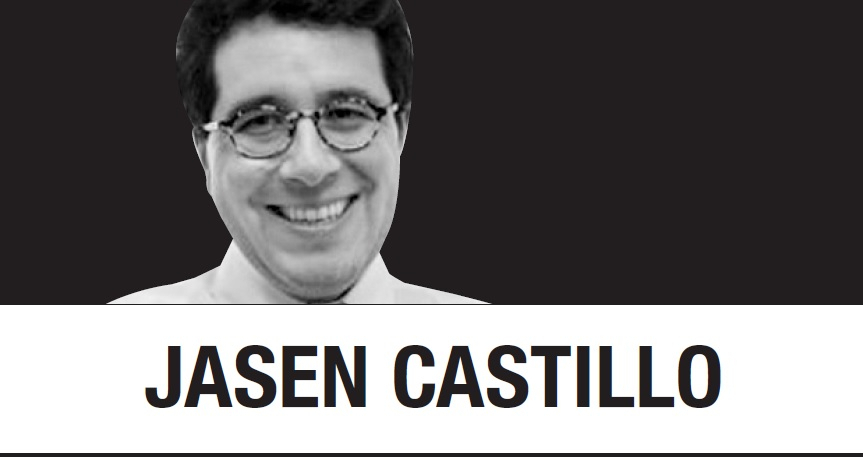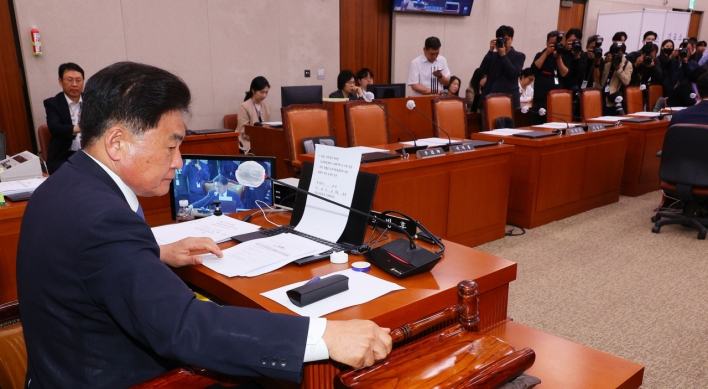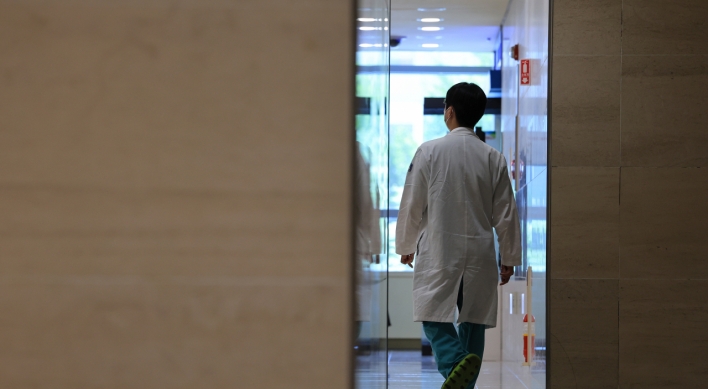[Jasen Castillo] Nuclear risks in Russia’s war with Ukraine are real
By Korea HeraldPublished : Nov. 7, 2022 - 05:20

For the second time in my life, the threat of nuclear war is keeping me up at night. The first occasion was in 1983, when as a child, I sneaked out of my bedroom to watch the TV movie “The Day After.” That movie gave me a healthy appreciation for what a nuclear conflict between the United States and Russia might look like.
Now, almost 40 years later, that fear has returned, as Russian President Vladimir Putin issues threats of nuclear use, seemingly to compensate for the poor performance of his armed forces fighting in Ukraine. A month ago, he warned, “If the territorial integrity of our country is threatened, we will without doubt use all available means to protect Russia and our people -- this is not a bluff.” And after annexing four provinces of Ukraine, Putin declared, “The United States is the only country in the world that has used nuclear weapons twice, destroying the cities of Hiroshima and Nagasaki in Japan. And they created a precedent.”
The Biden administration has responded forcefully to Putin’s nuclear brandishing. In a May commentary for The New York Times, President Joe Biden explained, “Any use of nuclear weapons in this conflict on any scale would be completely unacceptable to us as well as the rest of the world and would entail severe consequences.” More recently, his national security adviser, Jake Sullivan, stated, “We have the continuing ability to reach Russia and tell them in no uncertain terms, for example, what the consequences would be, and they would be catastrophic if Russia went down the dark road of nuclear weapons use.”
While Russia and the United States issue competing threats, it is important to understand the different pathways to nuclear escalation that could emerge from the war in Ukraine. Of course, any conventional conflict involving a nuclear-armed power has the potential to escalate. In this case, Putin believes that Russia is in a high-stakes conflict. He envisioned a quick and decisive victory; instead, Ukrainian forces have shown a greater will to fight and have Russian forces on the run, even retreating from newly annexed territories. Under these circumstances, nuclear weapons could be the ace in the hole, an instrument for reversing defeats on the battlefield. The escalation in violence, including nuclear use, could be worth the gamble in Putin’s mind.
The US and its NATO allies are no strangers to this type of strategy. During the Cold War, the Western alliance followed the strategy of flexible response, threatening to use nuclear weapons to defeat what many considered the conventionally superior armed forces of the Warsaw Pact. The alliance would respond to an invasion first with low-yield, battlefield nuclear weapons, reserving the ability to escalate to greater nuclear use if Warsaw Pact members did not withdraw. NATO took numerous steps to convince Soviet leaders that this threat was credible. The alliance’s forces and posture all aimed to convince the Soviet Union that the Western alliance would attempt nuclear coercion and risk an all-out nuclear war rather than lose on the conventional battlefield.
Prudent US policymakers should assume Russia today might make the same calculation about its war in Ukraine. Even NATO seems to understand Russia cares deeply about what happens in Ukraine.
What, then, are the paths to nuclear use in the Ukraine war? One road to escalation could involve the deliberate use of nuclear weapons by Russia. For example, the collapse of Russian armed forces in Ukraine, especially the portions of the country recently annexed, could prompt Putin to conduct a handful of attacks with low-yield nuclear weapons to compel his opponents to back down. The threat of further nuclear use would loom large, adding to Russia’s coercive leverage.
Some analysts have suggested that NATO respond to Russian nuclear use by joining the conventional fight on Ukraine’s side. This is foolish and dangerous. Already at a disadvantage on the battlefield, Russia would then rely on nuclear weapons to counter NATO’s conventional strengths. This possibility likely deterred the Biden administration from creating a no-fly zone over Ukraine. Despite calls from former national security officials, US officials seemed to understand the nuclear risks.
Even if Putin were to resist deliberate nuclear use in response to direct NATO military intervention, there would be the danger of inadvertent escalation. How NATO fights conventionally could look like efforts to disarm Russia of its nuclear weapons. Similarly, there would be the possibility of accidental escalation. Both sides would face tremendous stress to keep control of their nuclear forces while fighting an intense conventional war.
NATO military intervention, then, would likely provoke more nuclear escalation. In such an instance, the alliance could find itself facing the strategy it planned to use during the Cold War under Russia’s nuclear crosshairs, not the other way around.
With these escalation dynamics in mind, the US and its allies need to start thinking about ending the conventional war in Ukraine rather than prolonging it. Like it or not, Putin sees this as a high-stakes conflict. Russia’s inability to win a conventional war could cause it to rely on nuclear weapons to achieve its aims.
Although it is in US interests to protect Ukraine’s sovereignty, the greater American interest is in preventing a wider and longer war. Now is the time for the US to start thinking about creating offramps to terminate the war and balance these interests. This might require Washington to limit Kyiv’s war aims.
It would not be the first time American policymakers pressured partners against taking actions that might cause a war to escalate. Sometimes we need to choose between the lesser of two evils.
Jasen Castillo
Jasen Castillo is codirector of the Albritton Center for Grand Strategy at Texas A&M University and a nonresident fellow at the foreign policy think tank Defense Priorities. He wrote this for the Chicago Tribune. -- Ed.
(Tribune Content Agency)
-
Articles by Korea Herald










![[Kim Seong-kon] Democracy and the future of South Korea](http://res.heraldm.com/phpwas/restmb_idxmake.php?idx=644&simg=/content/image/2024/04/16/20240416050802_0.jpg&u=)








![[Today’s K-pop] Zico drops snippet of collaboration with Jennie](http://res.heraldm.com/phpwas/restmb_idxmake.php?idx=642&simg=/content/image/2024/04/18/20240418050702_0.jpg&u=)